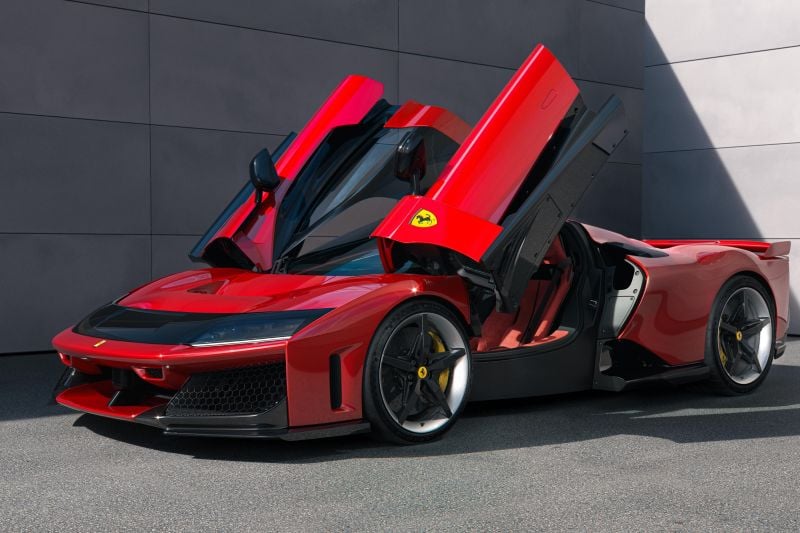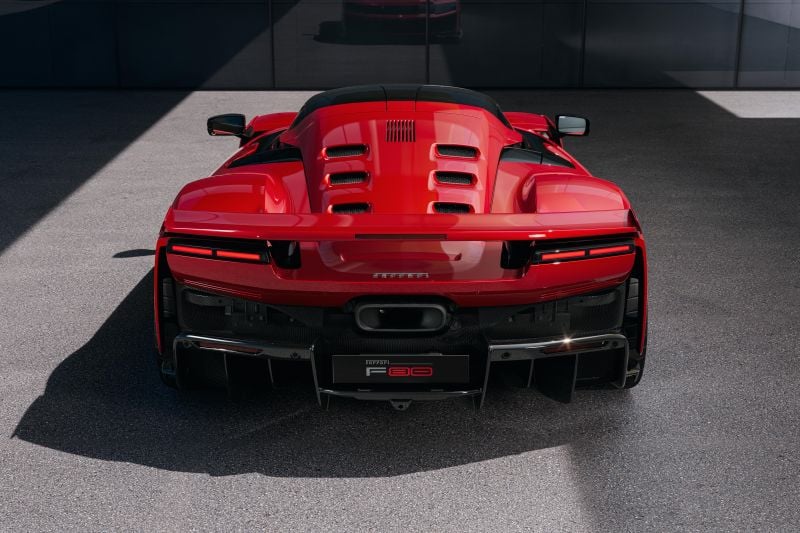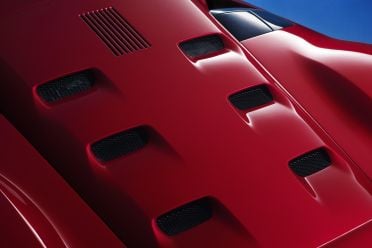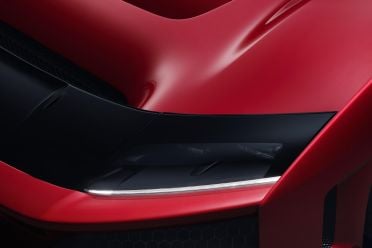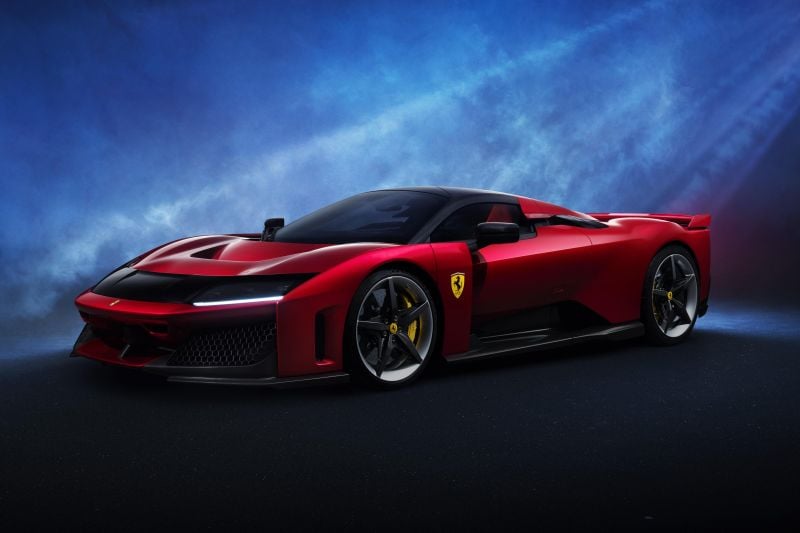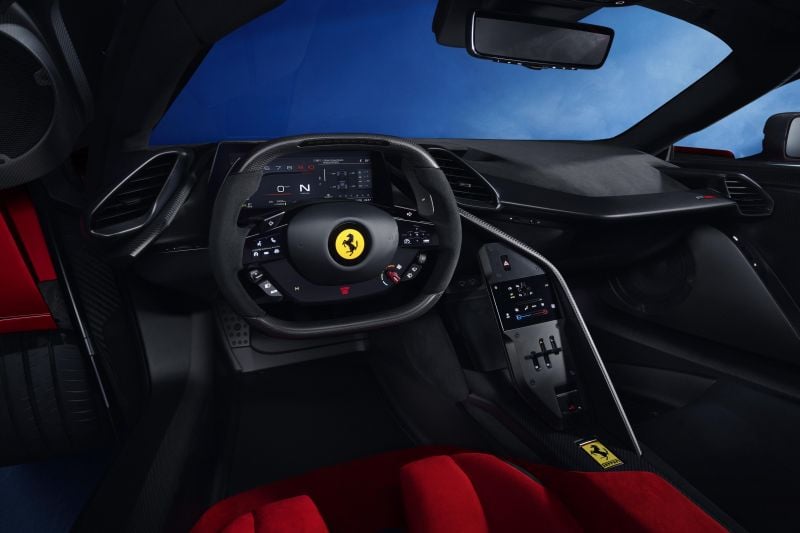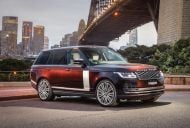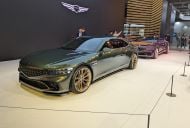The Ferrari F80 is the pinnacle of engineering from Maranello, and while many will dismiss it for not being a screaming V12, nobody can deny that its performance credentials are well beyond what many thought possible.
Let’s take a closer look at what makes the new Ferrari powertrain work and how it achieves its incredible performance figures.
No less than 1200hp (882kW) of power and a 0-100km/h acceleration time of just 2.15 seconds is impressive regardless of the application, but in the modern age of crazy electric supercars the figures by themselves and without context can potentially be meaningless.
100s of new car deals are available through CarExpert right now. Get the experts on your side and score a great deal. Browse now.
“Raw performance figures may seem mere numbers without the exhilarating experience to back them up. But, as with every Ferrari, those numbers are important only if reachable while driving and smiling,” Gianmaria Fulgenzi, Ferrari’s chief product and development officer told us at the launch of the F80 in Italy this week.
Mr Fulgenzi says the point of the new F80 was not just to add more horsepower for the sake of it, but to do so in a way that made the car useable and fun. This also helps explain the 1050kg of downforce available at 250km/h.
Ignoring the engine and electric components for now, the reason the systems all work together is the company’s new e4WD system, which Ferrari claims is a whole step above the technology in the just launched SF90 XX Stradale.
The side slip control (SSC) has reached version nine and now makes drivers look like masterful pilots even when they are not. According to Mr Fulgenzi, the F80 even encourages playful slides at the limit.
While there’s no V12 under the bonnet (find out why here), the V6 unit comes with incredible pedigree. Not only do Ferrari’s F1 engines have the same cylinder count, but the F80’s engine comes almost straight from a Le Mans-winning racecar.
“This one is based on the same 120-degree V6 architecture that raced and won at the 24 Hours of Le Mans, but all the components are new,” says Mr Fulgenzi.
It’s coupled with the eight-speed gearbox, and achieves a new record specific output for a Ferrari production engine, 300hp (224kW) per litre.
Some of the new features include the adaptation of an electric-turbo solution for the first time in a Ferrari. The two turbos are spooled up by two 48V electric motors (one per turbo), charging the compressor at low engine revs.
Ferrari says this not only helps the typical response time of Ferrari engines but has also solved the engineering challenge of allowing the company to increase the dimension of the turbines (without introducing lag).
The twin-turbo V6 engine is paired with a brand-new 800V hybrid architecture (another first for Ferrari). It all starts with an F1-inspired compact Motor Generator Unit-Kinetic (MGU-K) mounted at the front, which is coupled to the engine with a racing-derived gear set.
The MGU-K is the main energy generator for the 800V system and it powers the brand-new front-axle electric motor that delivers a maximum output of 208.8kW.
Ferrari’s rate of internal development is so great that the system in the F80 is more compact and 36kg lighter than the one in the SF90 XX Stradale – which has only just started rolling off the production line.
Two front electric motors (one for each front wheel) were designed in-house and are derived from the systems found in Ferrari F1 cars. That means a carbon-fibre-core rotor that allows higher revs with less weight and lower dimensions.
The two in the front axle allow a weight reduction of 1.4kg compared to the SF90 XX.
The battery itself is also made by Ferrari and uses carbon-fibre housing to save weight. It has a peak output of 242kW (49kW more) and weighs 38kg less than the SF90 XX Stradale battery. It uses completely new cells provided by the same supplier as for the brand’s F1 batteries.
Ferrari has also built the chassis itself to handle the enormous loads of not just the powertrain but also the aerodynamics. A full carbon-fibre chassis houses the F80’s internals and in order to prioritise the driver in the F80, Ferrari has made the driver’s side wider than the right-hand side for the passenger.
“We did this to reduce the cabin dimensions, to improve aerodynamics and reduce weight,” Fulgenzi says.
Compared to LaFerrari, the chassis weighs five per cent less and has a 50 per cent increase in torsional and beam stiffness.
From an aerodynamics perspective, the vehicle’s underfloor is unlike anything we’ve seen beneath a road car. It has a tri-plane wing and S-duct that, in addition to a gurney flap, delivers a downforce figure of 460kg at 250km/h.
In order to match the front’s downforce figures, an active wing has been fitted to the rear and it’s completely integrated in the car design when closed and the car is turned off. It activates based on acceleration, steering wheel input and heavy braking.
The active rear wing delivers 590kg of downforce 250km/h.
The F80’s suspension system is also inspired by its race cars. The horizontal shock absorber and springs are provided by the same supplier used for GT race cars. Ferrari makes the F80’s upper wishbone in-house using 3D metal printing technology borrowed from the F1 team, which Ferrari claims saves 5kg.
The F80 also becomes the first road-legal Ferrari to leave the factory with CCM-R plus brake discs, the same as those found in the 296 Challenge car. The company claims the discs offer three times the longevity of its standard brake system for track use.
Australians can be proud to know that the F80 rides on Carbon Revolution wheels made in Geelong, Victoria. The new generation of carbon-fibre rims, with a brand-new five-spoke style instead of the current 10 spokes, can be painted or had in full carbon (or mixed).
There is still a lot to learn about the Ferrari F80’s powertrain, such as its capability to keep the battery and powertrain cool, how long it will take the battery to recharge from empty and if it will it ever even get empty.
What we do know is that Ferrari decided not to have a larger battery and offer a plug-in system in order to save weight and, while there is good reason to believe the 2.28kWh battery could have delivered a small electric-only driving range, the Italian company opted not to go down that path given this car is all about performance, not efficiency.
| Specifications | Ferrari F80 |
|---|---|
| Engine | 3.0-litre twin-turbocharged V6 engine with electric motor |
| Engine outputs | 662kW/850Nm |
| Electric motor outputs | 220kW/242Nm** |
| System outputs | 882.35kW/1100Nm+ |
| Battery | 2.28kWh battery |
| Transmission | 8-speed dual-clutch F1 DCT |
| Driven wheels | AWD |
| Weight | 1525kg dry weight |
| Maximum speed | 350km/h |
| 0–100 km/h | 2.15s |
| 0–200 km/h | 5.75s |
| 100-0 km/h | 28m |
| 200-0 km/h | 98m |
| Fuel economy (claimed) | TBC |
| Electric driving range (PHEV) | 0km |
| CO2 emissions | TBC |
| Maximum engine speed | 9000rpm (dynamic limiter at 9200rpm) |
|---|---|
| Compression ratio | 9.5:1 |
| REAR ELECTRIC MOTOR (MGU-K) | |
| Operating voltage | 650-860V |
| Peak power Regenerative braking: | 70kW (95cv); ICE assist: 60kW (81cv) |
| Peak torque | 45Nm |
| Maximum engine speed | 30,000rpm |
| Weight | 8.8kg |
| FRONT ELECTRIC MOTOR | |
| Operating voltage | 650-860V |
| Peak power | 105kW (142cv) for each of the two electric motors |
| Peak torque | 121Nm |
| Maximum engine speed | 30,000rpm |
| Weight | 12.9kg |
| HIGH-VOLTAGE BATTERY | |
| Maximum voltage | 860V |
| Maximum power (charge/discharge) | 242kW |
| Energy | 2.28kWh |
| Maximum current | 350A |
| Power density | 6.16kW/kg |
| Weight | 39.3kg |
Vehicle specifications
| Length | 4840 mm |
|---|---|
| Width | 2060mm |
| Height (in kerb weight conditions) | 1138mm |
| Wheelbase | 2665mm |
| Front track | 1701mm |
| Rear track | 1660mm |
| Dry weight 1525 kg | 1525kg |
| Weight distribution | 42.2% front / 57.8% rear |
| Fuel tank capacity | 63.5 litres |
| Luggage compartment capacity (behind the two seats) | 35 litres |
Tyre, wheel and brake specifications
| Front | 285/30 R20 |
|---|---|
| Rear | 345/30 R21 |
| Front | 408 x 220 x 38mm (6 pistons per calliper) |
| Rear | 390 x 263 x 32mm (4 pistons per calliper) |
MORE: Everything Ferrari
MORE: Ferrari F80: Why 799 are being made?
MORE: Ferrari F80: How the new 1200hp hypercar came to be
MORE: ‘Ferrari is forever’: Maintaining electrified supercars indefinitely





